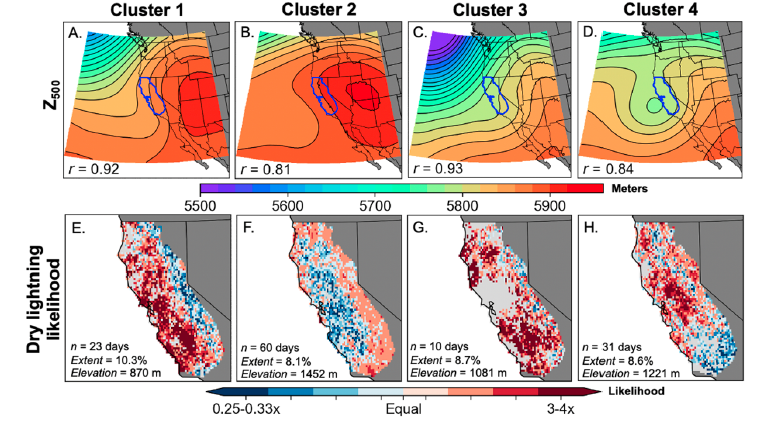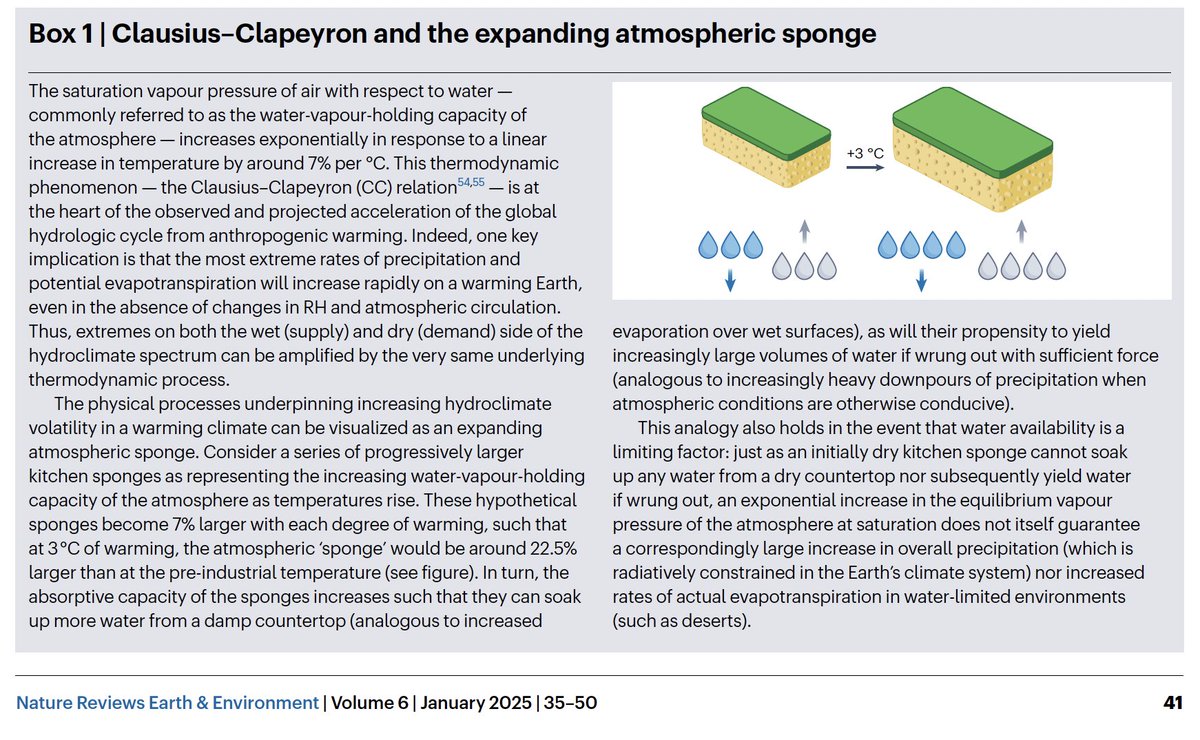New research on dry lightning events in California, led by @wx_statman, and including co-authors @climate_guy, @NickyNaus, @Weather_West, @danielletouma, & @ClimateChirper, is out today in @IOPenvironment (open access!). #CAwx #CAfire (1/n) iopscience.iop.org/article/10.108…
We assess regional-scale atmospheric conditions favorable for dry lightning in central & northern California (N&C CA), as well as seasonality. We find that nearly half of all lightning strikes in N&C CA are "dry" (accompanied by <0.10 in. of rain). (2/n) iopscience.iop.org/article/10.108… 

In some locations, including most of the San Francisco Bay Area, North Coast, and portions of Southern Sierra, fully 60-80% of May-Oct cloud-to-ground lightning strikes occur as dry lightning! Major implications for wildfire risk. (3/n) #CAwx #CAfire iopscience.iop.org/article/10.108… 

Overall, dry lightning events are most common mid-summer (Jul-Aug), but single largest events historically have actually occurred in shoulder seasons (Jun&Sep). Late-season (Sep-Oct) events preferentially occur in low elev/coastal areas.#CAwx #CAfire (4/n) iopscience.iop.org/article/10.108… 

We find that environmental conditions favorable for N&C CA dry lightning events include unusually moist & unstable conditions at mid levels atop dry & unusually hot low levels. High total column moisture does not preclude dry lightning (see:Aug 2020)!(5/n) iopscience.iop.org/article/10.108… 

From a regional atmospheric circulation perspective, we find 4 patterns that are broadly conducive to N&C CA dry lightning. All feature high pressure ridging centered to east of CA over continental interior, & 2 of 4 also feature an offshore trough/closed low.#CAwx #CAfire (6/n) 

We hope this work will contribute to understanding & predicting dry lightning events in CA given their large implications for wildfire risk, since lightning ignitions often occur in large volume and spread widely across remote areas. #CAwx #CAfire (7/n) iopscience.iop.org/article/10.108…
This is especially true in a warming climate, which is likely increasing the probability of ignition from lightning strikes by causing long-term drying of vegetation and amplifying the potential consequences of those fires that do ignite. (8/8) iopscience.iop.org/article/10.108…
• • •
Missing some Tweet in this thread? You can try to
force a refresh







